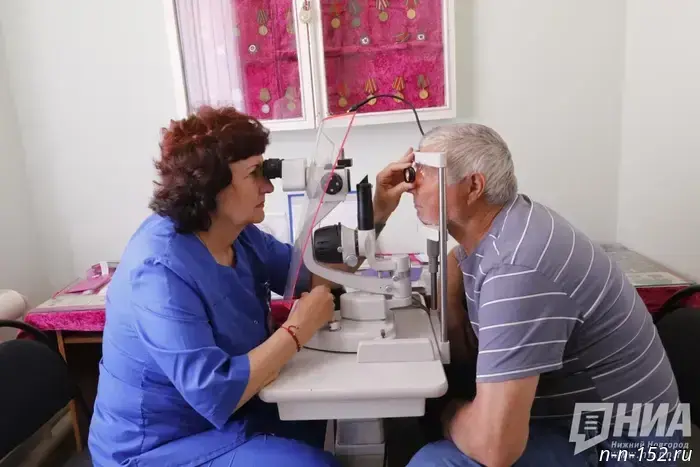The House of Books is 50!
Have you ever wondered why, in an age of rapidly developing digital information, there remains a place for books in people’s lives? Why interest in libraries does not fade, and what makes them appealing to the modern reader? We will explain using the example of the House of Books — Dzerzhinsk’s main book repository, which this year celebrates its half-century anniversary.
A bit of history
In the early 1970s, the residents of Dzerzhinsk were intrigued by a new construction at the intersection of Tsiolkovsky Avenue and a boulevard that at that time bore the name of Zhdanov. Nobody believed that in the near future a multi-story city library with huge panoramic windows and a wide staircase would open there. And when a mosaic panel began to be installed on the facade, people allowed themselves far-fetched guesses: a cinema, a cultural center, a gallery… But in one thing they were right — it would become a place where creativity, art and enlightenment would be the center of attention.
Why were the people of Dzerzhinsk so doubtful about the purpose of the new building? The answer is simple: libraries usually occupied the ground floors of apartment buildings, while here a whole palace was being erected! By the way, the construction of the House of Books was based on a standard design for a library with a capacity of up to 500,000 volumes. Similar libraries can be found in Pskov, Yaroslavl, and Petropavlovsk-Kamchatsky. Similar, but not the same. The project’s individuality was enhanced by a staircase leading to the second floor directly from the street. And by the mosaic panel "Cosmic Era" by Vladimir Smirnov.
Construction took more than a year. And in the evening of April 28, 1975, the House of Books opened its doors to its first visitors. The honor of cutting the red ribbon was given to the chairman of the city executive committee, Yuri Makarov. The guest of honor was the head of the cultural department, Boris Zhukovsky: thanks to his efforts the new building was allocated to the library system.
The House of Books housed the Central City Library named after N.K. Krupskaya, the technical library of the Kaprolaktam plant, and the city youth library named after Ostrovsky, which was transformed into the youth department. At that time not every regional center could boast such a magnificent library building!
Readers were struck by the spacious atrium and the high dome that filled the building with streams of light. Many came simply to admire the tropical plants, the gallery painted with fresco-portraits of outstanding figures of art and science, and the new halls. The House of Books included six specialized reading rooms, a microphoto laboratory, a department of sheet-music and music literature, a phonotheque, a cinema hall, and a room for listening to sound recordings. The entire fourth floor, which was not visible from the street and whose windows faced balconies with high concrete railings, was occupied by the scientific and technical library.
The connection between the departments and the storage area in the basement was carried out via pneumatic mail — a special device in the form of a capsule into which a librarian’s request for a particular publication was placed. Books were delivered to the department by a special lift. There was an assembly hall on the first floor.
Keeping pace with the times
Changes in the main city library kept pace with transformations in the country. Readers’ tastes changed depending on the situation. The work of the House of Books reflected, as in a mirror, the history of the country and of the native city.
In the early years after the opening and up until the mid-1980s, scholarly works on the topic of communism were in demand. For the 110th anniversary of Lenin’s birth, a Lenin Hall was opened on the third floor of the House of Books. Readers found there the complete works of Lenin and thematic collections. The events hall was filled almost every day with schoolchildren, students and workers.
In 1982 the city hosted the Book Festival for the first time. The city park was chosen as the venue, and the tradition lasted for many years: the 80th anniversary of the Communist Party, the 90th anniversary of Vladimir Mayakovsky and other milestone dates. At the end of the 1980s the themes and spirit of events changed course. In those years literary and art magazines became bestsellers — Friendship of the Peoples and New World: they were read from cover to cover, and detective stories were set aside.
In the 1990s the House of Books organized a mass work sector. Sewing and dressmaking enthusiasts flocked to the library. A city contest among homemakers was even invented — “You Can’t Forbid Sewing Beautifully.” Among older schoolgirls the "School of the Young Lady" was very popular; it taught etiquette, cleaning secrets and the basics of makeup.
Of course, rampant marketing in those years affected city libraries as well. Many readers remember the times when a library card required an annual fee. But the library still did not lose its readers.
With the start of the new century a new milestone began for the central library. In 2008 all city libraries were transformed into a single interconnected network. In April 2011 a library website was launched, and seven years later Dzerzhinsk libraries appeared on social media.
Preserving traditions
And so the House of Books turned fifty. The library staff were congratulated on this occasion by the chairwoman of the Dzerzhinsk City Duma, Viktoria Nikolaeva, and the deputy head of the Department of Culture, Youth Policy and Sports of the city administration, Nadezhda Yeremeyeva. On behalf of the townspeople they thanked the employees of the Central City Library for their many years of work.
“Preserving its history and traditions, the library team always moves forward. It delights us with interesting and informative events, introduces new books; in other words, it always contributes to widening the horizons of knowledge and our self-development. Thanks to the creativity and inspiration of the enthusiasts who work here, the House of Books has become a special place for many generations of Dzerzhinsk residents, a place people always want to visit,” Viktoria Nikolaeva said in her congratulatory speech.
Today the House of Books continues the traditions laid down over the years in this temple of enlightenment. More than ten years have passed since the first Library Night. The first experience was so successful that the events became thematic: BiblioSummer, BiblioTwilight, Night of the Arts. A little later the House of Books became the center of city intellectual games and now brings together fans of the quiz "What? Where? When?"
Another highlight of the city library is “Smart Sunday at the House of Books” — a project that in 2018 won a competition held by the Ministry of Culture in the field of library affairs. The most popular part in terms of attendance is its multimedia vernissage.
The House of Books also hosts many exhibitions under one roof: the cultural and historical center "Heritage of Russia" with the exhibition hall "The Romanov Dynasty," the art gallery "Art Panorama," and the Museum of Military Glory. And for the third year now all the events in the library’s life have been reported by our colleagues, the library system staff themselves, in the monthly publication Book Boulevard.
Events, books, catalogs — these are the visible parts of the library’s work, but for the House of Books to function smoothly a whole team of specialists works here. For example, in the acquisitions department. Its main responsibilities are selecting and purchasing new books. Once books were ordered according to thematic plans approved by major publishers. New arrivals were delivered every Wednesday, and readers lined up from early morning to sign up and be the first to read a long-awaited book. Now the acquisitions department is headed by Elena Koreshkova. She says that readers’ tastes mostly do not change. Dzerzhinsk residents love detective fiction, contemporary prose, historical novels and bibliographic works.
The year 2025 is a year of anniversaries for the centralized library system. The baton has been passed to the L. N. Tolstoy Library, which will soon also mark its 50th anniversary.
First person
The festive building
Nina Yermolaeva, head of the A. S. Pushkin Library:
“I began my working life in the bibliographic department of the House of Books. I came here as a young specialist just a few months after the opening — in October 1975 — and, like all residents of Dzerzhinsk, I was amazed. The House of Books is a festive building, something grand. It unified three libraries, but the staff was a monolith. Even then long-standing traditions were laid down: monthly seminars for exchanging experience, book-club meetings with reports on new publications, cultural events, exhibitions and lectures. Life here was never boring! Events took on a mass character. The literary café was especially popular; writers, poets and actors were invited there. The 'brain' of the library was the bibliographic department, where I worked, and where information about all printed materials appearing in the periodicals was collected. We recorded every article: the author, the title, what it was devoted to and what problems it revealed. Index cards and catalogs were compiled. It was titanic but extremely necessary work. Finding the needed material on a given topic took only a few minutes. I believe the library will never die. Electronic versions will not replace the printed edition. Psychologists claim that reading a 'real' book prolongs life and helps in the fight against dementia.”
Olga SERYOGINA. Photo from the editorial archive.
Другие Новости Нижнего (Н-Н-152)
 Beeline customers were twice as likely to combine vacation with studying at online universities.
Nizhny Novgorod News
Beeline customers were twice as likely to combine vacation with studying at online universities.
Nizhny Novgorod News
 Reception of citizens.
For the purpose of providing legal (juridical) assistance to the public at the Citizens' Reception of the Governor and Government of the Department of Documentation Support of the Nizhny Novgorod Region (hereinafter – the Citizens' Reception) at the address: Nizhny Novgorod, 06.10.2025. Buturlinsky Municipal District. Nizhny Novgorod Region. Buturlino.
Reception of citizens.
For the purpose of providing legal (juridical) assistance to the public at the Citizens' Reception of the Governor and Government of the Department of Documentation Support of the Nizhny Novgorod Region (hereinafter – the Citizens' Reception) at the address: Nizhny Novgorod, 06.10.2025. Buturlinsky Municipal District. Nizhny Novgorod Region. Buturlino.
 Lyulin: "May the first 'Russian Book Week' in Nizhny Novgorod be a time of discoveries"
From October 6 to 12, "Book Week" is being held for the first time in Nizhny Novgorod. The event, opening today at the Nizhny Novgorod Fair, will allow residents of the region to be the first in the country to get acquainted with new fiction, educational, 06.10.2025. NewsNN.Ru. Nizhny Novgorod Oblast. Nizhny Novgorod.
Lyulin: "May the first 'Russian Book Week' in Nizhny Novgorod be a time of discoveries"
From October 6 to 12, "Book Week" is being held for the first time in Nizhny Novgorod. The event, opening today at the Nizhny Novgorod Fair, will allow residents of the region to be the first in the country to get acquainted with new fiction, educational, 06.10.2025. NewsNN.Ru. Nizhny Novgorod Oblast. Nizhny Novgorod.
 Nizhny Novgorod Region has entered the top 20 regions in terms of standard of living.
Nizhny Novgorod News
Nizhny Novgorod Region has entered the top 20 regions in terms of standard of living.
Nizhny Novgorod News
 A naked, incoherent man was detained in the Kanavinsky District.
Nizhny Novgorod News
A naked, incoherent man was detained in the Kanavinsky District.
Nizhny Novgorod News
 Nizhny Novgorod doctors saved the sight of more than 200 patients with retinal tears.
Nizhny Novgorod News
Nizhny Novgorod doctors saved the sight of more than 200 patients with retinal tears.
Nizhny Novgorod News
The House of Books is 50!
Have you ever wondered why, in an age of rapidly developing digital information, there is still room for books in a person's life? October 6, 2025. Dzerzhinsky Vedomosti. Nizhny Novgorod Oblast. Dzerzhinsk.
